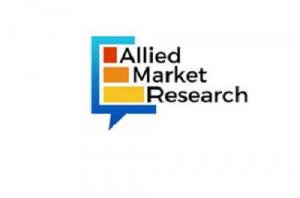Clean Mobility Revolution: Alternative Fuel & Hybrid Vehicles Market Trends
Hybrid and alternative fuels bridge current energy needs with zero-emission goals — policy, infrastructure, and partnerships shape the path ahead.
WILMINGTON, DE, UNITED STATES, September 3, 2025 /EINPresswire.com/ -- According to a new report published by Allied Market Research, titled, “Alternative Fuel and Hybrid Vehicle Market by Fuel Type (Hybrid Vehicles, Plugin Hybrid Vehicles, Battery Electric Vehicles, Others (Gaseous Fuels, Biofuels)), by Vehicle Type (Passenger Cars, Light Commercial Vehicles, Heavy Commercial Vehicles), by Vehicle Class (Economical Vehicles, Mid-priced Vehicles, Luxury Vehicles): Global Opportunity Analysis and Industry Forecast, 2020-2030" The global alternative fuel and hybrid vehicle market was valued at $352.0 billion in 2020, and is projected to reach $7,976.0 billion by 2030, growing at a CAGR of 34.5% from 2021 to 2030.The Alternative Fuel and Hybrid Vehicle market is rapidly evolving as manufacturers, fleet operators, and consumers shift toward low-carbon transport solutions driven by stricter emissions regulations, falling battery and alternative-fuel technology costs, and growing investments in charging and refuelling infrastructure. Demand is being accelerated by government incentives, corporate sustainability targets, and rising consumer awareness of total cost of ownership benefits for hybrid and alternative-fuel models.
𝗗𝗼𝘄𝗻𝗹𝗼𝗮𝗱 𝗣𝗗𝗙 𝗕𝗿𝗼𝗰𝗵𝘂𝗿𝗲: https://www.alliedmarketresearch.com/request-sample/A01413
𝗠𝗮𝗿𝗸𝗲𝘁 𝗗𝘆𝗻𝗮𝗺𝗶𝗰𝘀
• Growth drivers: Stricter tailpipe emissions regulations worldwide, coupled with generous purchase incentives and tax breaks in many regions, are the primary drivers pushing OEMs to expand hybrid and alternative-fuel lineups. Fleet electrification programs and corporate sustainability commitments also stimulate large-volume purchases for buses, delivery vans, and municipal fleets.
• Technology & cost trends: Advances in battery chemistry, hybrid powertrain controls, hydrogen fuel cell efficiency, and lighter materials have reduced cost and improved range and reliability. Continued economies of scale in battery manufacturing and broader component standardization are expected to compress prices further, making hybrids and alternative-fuel vehicles more competitive against conventional ICE models.
• Infrastructure & supply-chain limits: Widespread adoption depends on charging networks, hydrogen refuelling stations, and biofuel supply chains being scaled up quickly. Infrastructure rollout is uneven across regions, creating pockets of fast adoption and areas where lack of refuelling/charging options restrains consumer and commercial uptake.
• Market segmentation & adoption patterns: Passenger vehicle hybrid adoption leads overall volumes today due to easier integration and lower infrastructure needs compared with full BEVs or hydrogen trucks. Conversely, commercial and heavy-duty segments are showing fast growth for alternative fuels (CNG, hydrogen, renewable diesel) where duty cycles and total cost-of-ownership favor non-petrol solutions.
• Regulatory & geopolitics influence: Fuel and energy security concerns—plus geopolitically driven fuel price volatility—push governments to diversify transport energy sources. Policy uncertainty, however, can produce stop-start demand; long-term clarity on subsidies, low-emission zones, and fuel mandates will strongly influence investment timing across the value chain.
𝗦𝗻𝗮𝗴 𝗗𝗶𝘀𝗰𝗼𝘂𝗻𝘁: https://www.alliedmarketresearch.com/checkout-final/A01413
𝗦𝗲𝗴𝗺𝗲𝗻𝘁 𝗢𝘃𝗲𝗿𝘃𝗶𝗲𝘄
The alternative fuel and hybrid vehicle market analysis is segmented on the basis of fuel type, vehicle type, vehicle class, and region. By fuel type, the market is fragmented into hybrid vehicles, plugin hybrid vehicles, battery electric vehicles, and others. On the basis of vehicle type, it is fragmented into passenger cars, light commercial vehicles, and heavy commercial vehicles. Based on vehicle class, the market is divided into economical vehicles, mid-priced vehicles, and luxury vehicles. By region, the report is analyzed across North America, Europe, Asia-Pacific, and LAMEA.
𝗥𝗲𝗴𝗶𝗼𝗻𝗮𝗹 𝗔𝗻𝗮𝗹𝘆𝘀𝗶𝘀
North America and Europe remain important early markets due to strong regulatory pressure, growing charging infrastructure, and OEM commitments to hybrid/alternative lineups; both regions also host growing fleets of plug-in hybrids and expanding public charging networks. Asia-Pacific—led by China, Japan, and South Korea—combines huge volume demand with aggressive local manufacturing of batteries and hybrids, making it the largest regional market by units and production capacity.
Emerging markets in Latin America, the Middle East & Africa show selective uptake: countries with strong biofuel industries or CNG infrastructure see faster adoption of those alternatives, while others lag until charging and servicing networks improve. Regional incentives, local fuel availability, and fleet renewal cycles will determine near-term growth heterogeneity.
𝗙𝗼𝗿 𝗣𝘂𝗿𝗰𝗵𝗮𝘀𝗲 𝗜𝗻𝗾𝘂𝗶𝗿𝘆:
https://www.alliedmarketresearch.com/purchase-enquiry/A01413
𝗖𝗼𝗺𝗽𝗲𝘁𝗶𝘁𝗶𝘃𝗲 𝗔𝗻𝗮𝗹𝘆𝘀𝗶𝘀
Legacy OEMs (Toyota, Honda, Ford, Volkswagen, etc.) compete with new entrants and EV-first companies by offering broad hybrid portfolios and layered electrification strategies — hybrids as near-term volume drivers while full BEVs and fuel-cell vehicles scale. Competitive advantage is shaped by proprietary battery partnerships, powertrain IP, local manufacturing footprints, and dealer/service networks that support alternative fuels.
Tier-1 suppliers (power electronics, battery module makers, fuel-system integrators) and energy providers (utilities, hydrogen producers, CNG suppliers) are increasingly strategic partners in go-to-market plans. M&A, co-development agreements, and captive charging/hydrogen networks are common tactics to secure both technology and distribution advantages.
𝗞𝗲𝘆 𝗙𝗶𝗻𝗱𝗶𝗻𝗴𝘀 𝗼𝗳 𝘁𝗵𝗲 𝗦𝘁𝘂𝗱𝘆
• • Rising regulatory pressure and incentives are the primary near-term growth catalysts for hybrid and alternative-fuel vehicle adoption.
• Battery cost reductions and hybridization tech improvements will expand hybrid market share in passenger vehicles.
• Infrastructure gaps (charging, hydrogen, biofuel supply) remain the main bottleneck to faster full-scale adoption.
• Commercial transport and fleet electrification present high-value opportunities for alternative fuels like CNG and hydrogen in specific duty cycles.
• Strategic partnerships across OEMs, suppliers, and energy companies will determine winners in supply chain control and go-to-market speed.
𝗧𝗿𝗲𝗻𝗱𝗶𝗻𝗴 𝗥𝗲𝗽𝗼𝗿𝘁𝘀 𝗶𝗻 𝗜𝗻𝗱𝘂𝘀𝘁𝗿𝘆:
Automotive Fuel Tank Market
https://www.alliedmarketresearch.com/automotive-fuel-tank-market-A08493
Specialty Fuel Additives Market
https://www.alliedmarketresearch.com/specialty-fuel-additives-market-A13918
Hydrogen Fuel Cell Train Market
https://www.alliedmarketresearch.com/hydrogen-fuel-cell-train-market-A07806
Hydrogen Fuel Cell Vehicle Market
https://www.alliedmarketresearch.com/hydrogen-fuel-cell-vehicle-market
Hybrid Boats Market
https://www.alliedmarketresearch.com/hybrid-boats-market-A321967
High-Voltage Hybrid Vehicle Market
https://www.alliedmarketresearch.com/high-voltage-hybrid-vehicle-market-A11845
David Correa
Allied Market Research
+15038946022 ext.
email us here
Visit us on social media:
LinkedIn
Facebook
YouTube
X
Legal Disclaimer:
EIN Presswire provides this news content "as is" without warranty of any kind. We do not accept any responsibility or liability for the accuracy, content, images, videos, licenses, completeness, legality, or reliability of the information contained in this article. If you have any complaints or copyright issues related to this article, kindly contact the author above.

